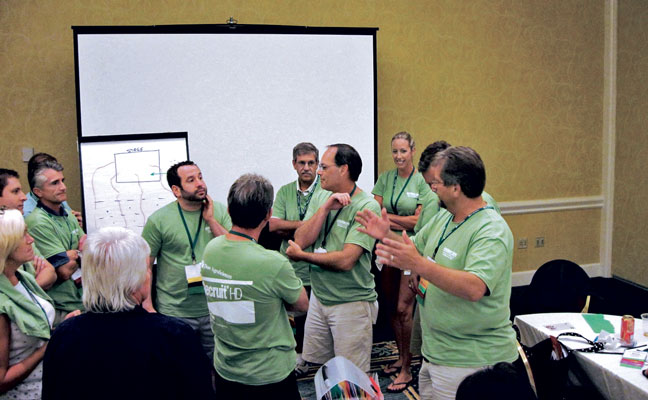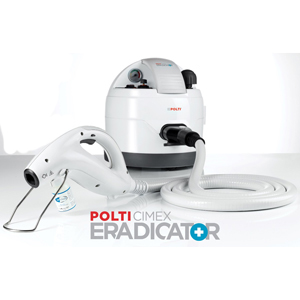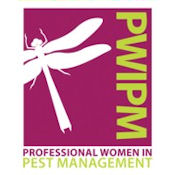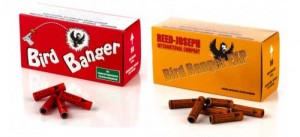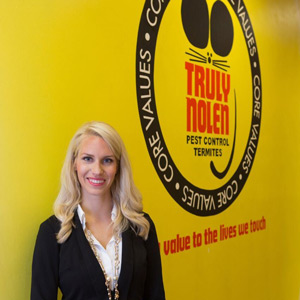
PHOTO: ISTOCK.COM/MAGDASMITH
Bring up honey bees and other pollinators around some pest management professionals (PMPs), and watch them visibly tense. The topic seems so fraught with liability, complexity and possible negative repercussions that many avoid it at any cost.
But it doesn’t have to be that way. Molly Marsh, third-generation CEO of Novelty, Ohio-based Patton Pest Control, considers promoting live bee removal service as a positive for her company.
“People like to hear that we try to protect the environment,” she explains. “It opens the door for an interesting conversation where we can really talk about what we do, and that our job does not just entail using pesticides. It’s about understanding the biology and behaviors of the pest we are dealing with, and developing a program that will help solve the issue.”
An add-on service
For PMPs who are thinking about expanding their stinging insect services to include live removal of pollinators, Eric “Critter” McCool suggests “getting your feet wet” with swarm removals. Educate yourself, he says, and then work your way up.

Claude Griffin. Photo: Gotcha Pest Control
“Extractions involve electrical and structural issues,” adds McCool, founder and president of Bee Nation, Franklin, Pa. “Start off with removals — your paper wasps, mud daubers, cicada killers. Then get up into larger wasps, then bee extractions.”
Claude Griffin, whose career includes stints on Animal Planet TV programming, is owner and founder of Houston, Texas-based Gotcha Pest Control. He notes that a pollinator protection (bee-proofing) service is a lucrative offering when done right.
“When I met my guy, he was a handyman, and I trained him to be a bee- and rodent-proofer,” he says.
Because they’re often on the property on their own, it’s important to hire someone who doesn’t mind being alone and doing tedious work.
Conversely, Griffin says, “you’ve got a guy who does well at healthcare and daycare accounts? Just keep him on that. Your technicians can’t be jacks of all trades. Don’t load for bear and rabbit when you’re killing a mouse.”
And when Griffin says “tedious,” he means it. He bee- and rodent-proofs several accounts himself and admits that sometimes he might only get 50 linear feet done in a day because of all the factors to consider. But callbacks are rare, thanks to his thoroughness.
“You’ve got to match the paint. You’ve got to ensure bricks and siding are matching, that the columns aren’t hollow anymore,” he offers as examples. It also offers the bonus of preventing spiders, silverfish and large cockroaches from appearing around the structure, Griffin says.
“There’s not a lot of land left here” for residential development, he says of his Houston market. “We’re often finding ourselves protecting our clients’ homes from the neighbors because they’re fence-to-fence on all sides.”
Exclusion and repair are a big part of Insect IQ’s business in the Tampa, Fla., market.
“We offer full exclusion and removal services, and they both come with a two-year guarantee,” says company owner and entomologist Jonathan Simkins.

Bill Hoffman
Bill Hoffman, ACE, owner of Hoffman’s Exterminating, Mantua Township, N.J., began offering bee extraction and removal three years ago because two of his technicians had the interest and experience. It’s since become a growing part of his business, and today, his office actively maintains hives they extracted.
“When we contracted it out, we felt we had no control — sometimes they were successful and sometimes they were not,” he explains. “We wanted to ensure our customers were handled in a way we would expect, so after years of referring this service out, we decided to bring most of it in-house.”
If you’re thinking of hiring a specialist just to offer bee-proofing and repair work, “having a construction background is great,” according to McCool.
“Even now, I sometimes stop at construction sites and ask to see a house built before it’s drywalled, just to keep up with techniques,” he says.
McCool, who has home inspector training, says this diligence pays off.
“We recently had an issue where there was a radiant heat unit above a bay window,” he says. “Had we cut into that without checking first, it would have cost us thousands of dollars.”
Wil Morris, owner of Wild Bee and Pest Solutions, Portland, Ore., agrees that bee services are a continual learning process.

Wil Morris
“Follow the topic on YouTube and join social media groups with bee removal specialists around the country, to share ideas and experiences,” he suggests.
McCool says offering bee-proofing and post-extraction repair services can be a huge competitive advantage. “Customers would much rather pay you than get yet another person in,” he points out, but with a caveat he uses at his own company.
“If we’re farther than two hours from our location, we don’t provide the repair service but instead put a temporary patch on, or we subcontract,” McCool says. “One thing to be aware of is that a lot of cities and municipalities have their own laws about permits, etc. We don’t leave a hole in the wall, but we don’t try to pull permits and that sort of thing in places in which we’re not familiar with the particular legalities of the area.”
The extraction process
Morris estimates about 60 percent of his business is devoted to honey bee removal and repair, and another 30 percent is for other stinging insect and general pest control. The remaining 10 percent is for small construction projects for this licensed contractor in the off season. Morris has perfected his five-step process for most bee extraction accounts:
- He uses a thermal camera to locate the nest and determine the more practical approach — inside vs. outside. Then, he carefully and neatly cuts and removes siding, drywall or whatever is needed to expose the nest.
- Morris then uses a bee vacuum he made himself to get the majority of the bees off of the comb. “It’s a screened beehive box with a vacuum attachment,” he explains.
- Morris then carefully cuts each comb to fit into hive frames and secures them with rubber bands. “I place those in a separate hive, then vacuum the last of the bees.”
- During the process, Morris says, “I’m always looking for the queen, and when I find her, I place her in a special cage and place her in the hive box. This often will attract other flying bees to the box as they locate her pheromone scent. I clean out the void of honey and comb, spray the area with mold-killing primer to seal the area of old hive scent, then stuff the void with insulation to further prevent any future infestations.” In most instances, he will take the hive with the comb “and some bees with the queen and the vacuum box to join in the bee yard.”
- Finally, Morris schedules the repair visit. “Sometimes I do it the same day, depending on the extent of the repairs. I also focus on sealing any entry points that led to the infestation in the first place.”

Half of Jonathan Simkins’ revenue is from stinging insects. PHOTO: INSECT IQ
Insect IQ’s Simkins says he also uses a pheromone deterrent to keep other bee colonies from re-infesting the same area.
“Honey bees like that ‘old honey bee colony smell,’ and if you do not get all of the colony out properly and remove the pheromones completely, a new queen and her daughter will infest the same area sometime in the future,” he says.
Simkins says he learned the basics of beekeeping growing up on a farm in Kentucky. While attending the University of Florida, he also worked in the Division of Plant Industry in the Apiary Department. Today, he estimates about 50 percent of all Insect IQ’s revenue stems from stinging insects — and he tries to “get stung at least once a week now” to keep up his tolerance, with more than 10,000 stings and counting.
In addition to McCool’s service and training headquarters, in which he and his team of five are available directly for clients and for subcontracting for PMPs, Bee Nation’s campus is comprised of a honey bee apiary, a stinging insect research facility, and a yellowjacket and hornet yard — which veterinary and pharmaceutical research companies make use of for testing and anti-venom purposes.
“Inside the research facility, we have probably 900 nests,” McCool estimates. “Outside, by mid-summer we usually have about 3.5 million live honey bees. Our focus is on continually developing better techniques for extraction, to keep both bees and PMPs safer.”
Expert advice
McCool estimates that as of early May, he’s up to a career high of 8,400 stings — 7,200 of which occurred while wearing a bee suit. None of his team is ever without an epinephrine auto-injector pen, and he recommends that “when you go to a job site, know where your car keys and cell phone are, and where the closest hospital is, because life can be unexpected.”
Griffin agrees wholeheartedly. He estimates bees comprise about 70 percent of his business. “I take the jobs other pest control firms leave behind,” he says. “I might get one easy bee job a week, the rest — it’s ‘let’s rip open the house.’”
But Griffin doesn’t mind. He enjoys being the cleanup man, combing through every crack and crevice until he unearths the root of the bee problem. He’s often called in by colleagues to troubleshoot and put everyone at ease.
“I make my money, and they get their client back on quarterly visits, trusting them again,” he says.

Like all other pests, proper identification is critical when servicing stinging insect accounts. Photo courtesy of, and copyrighted by, Gene White, pmimages@earthlink.net
He advises making sure your insurer knows you’re offering bee services. And keep in mind that if a route technician doing a stinging insect account gets stung badly — despite proper personal protective equipment (PPE) — it could mean up to three sick days for recovery.
“People don’t like seeing a different technician for their scheduled visits because their regular guy is out sick,” Griffin points out. “Why take the chance, if you can have a bee specialist at your disposal on his or her own route?”
Morris says that, before you answer your first bee call, you need to know where you are going to keep or off-load all of the bees you will end up removing. You should also consider the impact a proliferation of bee removal calls can have on established routes.

Chelle Hartzer
“I’m busy with bee removals during peak general pest season, so I recommend creating a dedicated department in an already established pest control business,” he says.
“This can be a profitable and rewarding part of your business, but training is crucial, as is making sure you have the right personnel,” Hoffman points out. “This is not for everyone; it is hard and hot work.”
If a dedicated team is not in the cards, bee service doesn’t have to be completely off the table. For example, Orkin Entomologist Chelle Hartzer, BCE, notes that her Atlanta, Ga.-based firm trains technicians on a variety of pests and pest situations. “Since it’s not often that bees are found inside wall voids, compared to cockroach or ant issues,” they either take it on a case-by-case basis or subcontract heavier cleanout and repair work.
Adding beekeepers

Bob Wiemer
Bob Wiemer, ACE, teases that “if you ask three beekeepers their opinion, you’ll get four answers.” Weimer, who is executive general manager of Pittsburgh, Pa.-based Pestco Professional Services, clarifies that the reality is there are many rules that beekeepers try to follow — and many exceptions to established rules, too.
Insect IQ’s Simkins stresses identification is crucial at bee accounts. Africanized honey bees (Apis mellifera scutellata, or AHB) were first confirmed in central Florida in 2002. Most beekeepers do not want this species tangling with their comparatively docile European species, he notes, so know what you’re dealing with before you call someone in.
Morris agrees. “Some beekeepers don’t want to deal with anything harder than catching a swarm. Originally, I started out doing the removals and giving the bees to other beekeepers that provided me with bee boxes. I still do that if a beekeeper refers a removal to me. But it was difficult to get anyone to follow through consistently that also had a day job, especially as the business grew, so I gradually ended up just investing in my own boxes and keeping the bees for myself and selling them here and there.
“It’s definitely a niche market that can be very profitable but, in my opinion, you should be interested in beekeeping, if even as a hobby,” he adds.
McCool points out that PMPs need to be careful because beekeepers can get in over their heads in complex hive extractions. “Make sure they’re insured, too,” he adds.
The “bee crisis” that has been bandied about for more than a decade isn’t exactly over, McCool says, but we seem to be over the hump, at least. He attributes the decline in honey bees to several factors, not the least of which was inexperienced beekeepers making rookie mistakes.
“In the mid-1970s, we had something similar that we termed the ‘disappearing crisis,’” he points out. “Am I worried about honey bees? No. We’re making efforts to protect them and understand them, including working with Ernst Pollinator Service, which does native flower and plant planning, up to 10,000 acres. We are starting to install and sell Bee Nation boxes with Ernst Pollinator to replant in certain locations, in areas at low risk for the public. We can provide habitat and ensure a future.”
Win-win for all

Moll Marsh, Patton Pest Control
Marsh says Patton Pest Control subcontracts much of the work to beekeepers to remove the nest. One local beekeeper “makes honey for a local store and catering company, so it’s neat to be a part of that process and see how a community works together,” she says. It also helps that one of her technicians is a beekeeper hobbyist who can take care of swarms.
“This year, we started a wall in our office to see how many honey bee nests we can save,” Marsh says, noting that as of early May, it was three and counting.
Above all, don’t discount the positive reputation reinforcement a successful bee removal job can provide, notes Orkin’s Hartzer.
“Most states have local beekeeper associations that are great to partner with when removal jobs come up,” she says. “While these jobs may not make a huge amount of profit, they can be a great source of goodwill and positive reinforcement for the community.”

PHOTO: ISTOCK.COM/PRZEMEKSUWALKI
Tools of the (removal) trade
Check out these tips from Bob Wiemer, ACE, executive general manager of Pittsburgh, Pa.-based Pestco Professional Services:
- Commercial-scale removal of honey bees requires top-notch, state-of-the-art tools. There is no underestimating the power and effectiveness of a gentle bee vacuum, which includes an adjustable vacuum head that can regulate the amount of suction delivered to the hive. This is vital to the well-being of the insects, as the idea is to transport them intact and not wreak havoc with their spirits and/or body parts.
- Another fundamental tool is a pinhole or borehole camera that can be inserted into a cavity to help determine whether a hive moves in an upward direction or across. These cameras are useful, but they displace easily — and when that happens, establishing needed perspective is lost.
- Bee-focused pest technicians also should attend workshops regularly, to keep them a few steps ahead of their next extraction situation.
The post Protecting people and pollinators appeared first on Pest Management Professional.

from Pest Management Professional https://www.mypmp.net/2019/06/25/protecting-people-and-pollinators/
Sacramento CA










